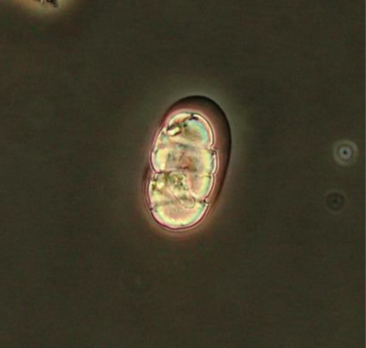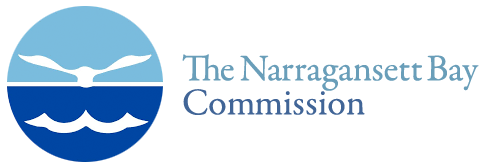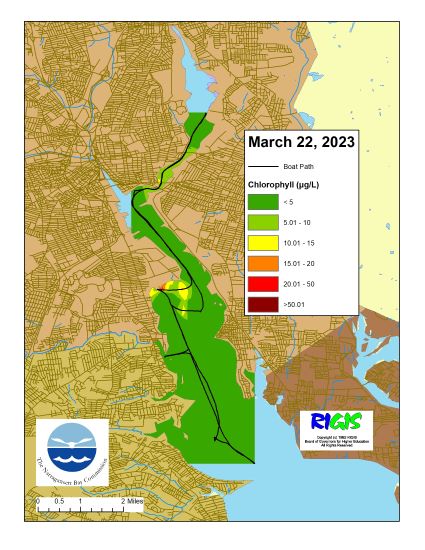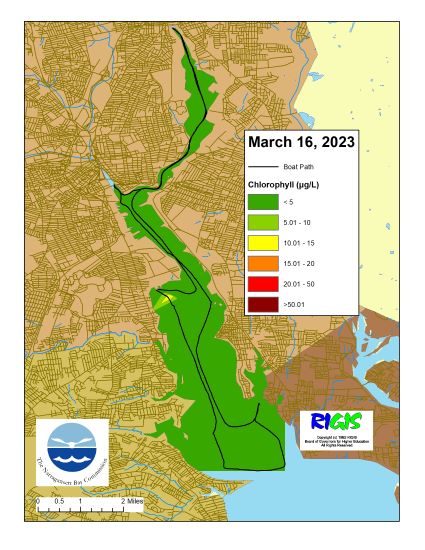March 19-25, 2023
Phytoplankton samples were collected on March 22, 2023 at Bullock Reach and analyzed in the laboratory shortly after collection. It was a brisk day with some cloud cover. The current was very strong and some seals were spotted in Narragansett Bay. Sondes data revealed the surface water temperature was 7.03⁰C, salinity was 13.76 psu, and chlorophyll a was 1.26 ug/L. The plankton tow net sample was filterable with a 20 micron mesh. The filtrate was a deep brown color and had a medium filter time. The tow net sample was analyzed qualitatively for microorganisms using phase contrast microscopy. The whole water sample was analyzed quantitatively under 200x phase contrast microscopy. A Hensen Stempel pipette was used to accurately deliver 1ml of sample to a Sedge-wick Rafter chamber. This analysis revealed a total of 108,000 cells per Liter. The micro flagellates were found at 4000 cells/L. The most predominant phytoplankton genus was Thalassionema spp. at 36,000 cells/L. Representative genera in the tow net sample include Skeletonema spp., Leptocylindrus spp. and pennate diatoms.
200x phase contrast image of Polykrikos spp.



